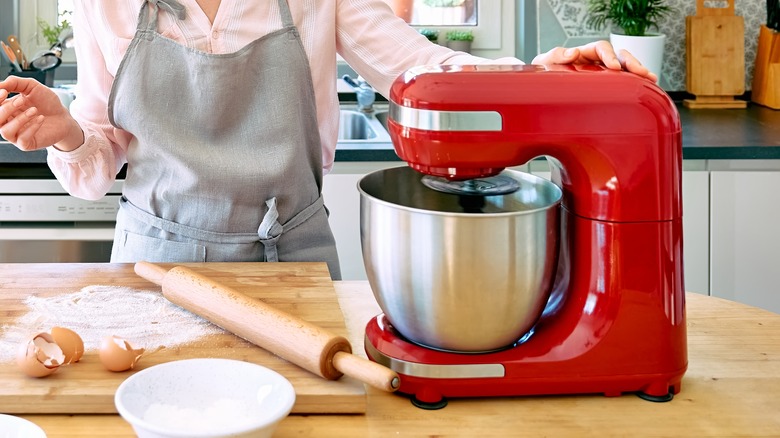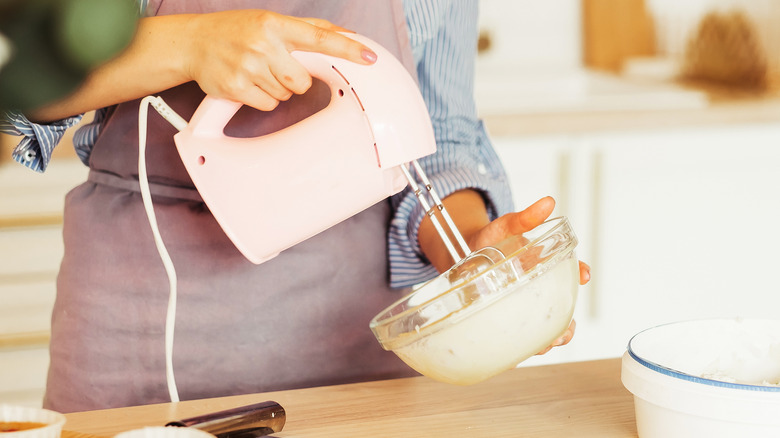Is It Worth Investing In A Stand Mixer?
If you're a regular home baker (or if you've ever tried creaming butter by hand for long enough), there's a good chance you've had the exasperated thought, "I should really get a stand mixer." You aren't alone; In 1919, says CNN, KitchenAid first introduced the stand mixer appliance, and home bakers have been adding them to their wish lists ever since.
According to Bon Appétit, the KitchenAid model comes with a wide, flat paddle, a whisk, and a dough hook as attachments. The appliance enables home bakers to easily make large batches in a fraction of the time it would take to produce manually. Whether kneading bread dough or beating egg whites for a meringue, a stand mixer can get the job done for you, hands-off. You can literally set a timer and walk away.
But all this convenience comes with a high price tag. Most KitchenAid stand mixers fall in the $300-$500 range. For bakers on a budget, Dash makes a stand mixer for $50, but it doesn't feature the higher-end models' orbital motion and high capacity. A five-quart stand mixer by Cuisinart costs about $200. Whether you're taking the plunge and writing a check for half a thousand dollars, or if you're forking over two hundred dollar bills, a stand mixer is a substantial investment any way you spin it. (Pun intended.) So, is it worth it?
Deciding if you need a stand mixer
The biggest draw of owning a stand mixer is its sheer power. You might have a bulletproof will, but your manual whisking ability (and even the power of an electric hand mixer) can't come close to the kinetic force of a stand mixer. Their high power can even cream butter at 65 degrees Fahrenheit, says Serious Eats, a physical task beyond even professional cooks. Working ingredients at a lower temperature makes for an evenly aerated, voluminous product, which is often essential for baking certain items.
Another appeal is versatility. According to The Takeout, most stand mixer models have an array of separately-sold attachments that will transform your appliance into an all-purpose tool that can spiralize fruits and veggies, cut pasta, churn ice cream, grind meat, mill spices and grains, and make juice. (Not to mention, the average lifespan of the appliance is 25 to 35 years.)
If you own an electric hand mixer and use it constantly, it might be a good idea to consider upgrading to a stand mixer. But, if you've gotten by this long without a hand mixer, there might be a reason why. If you don't bake often, or if you typically only make small batches of treats, investing in a hefty stand mixer might not be necessary. To save yourself from a potentially wasteful investment, Bon Appétit recommends buying a hand mixer first and seeing how often you use it before making such a large purchase.

